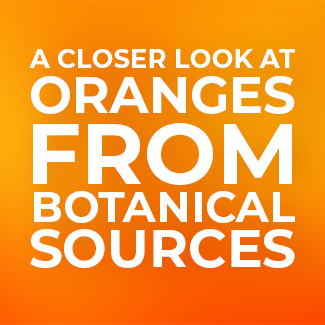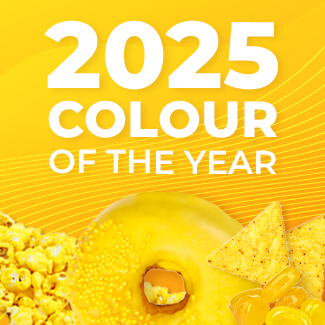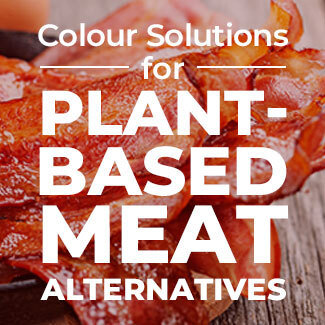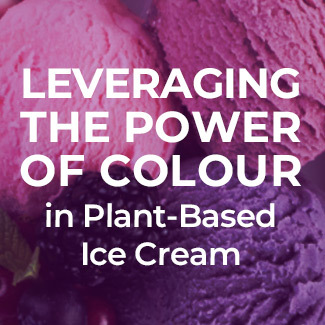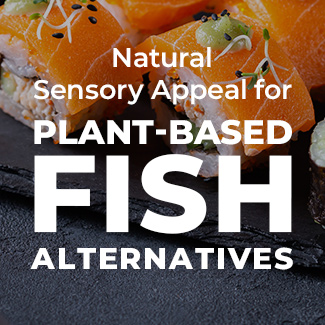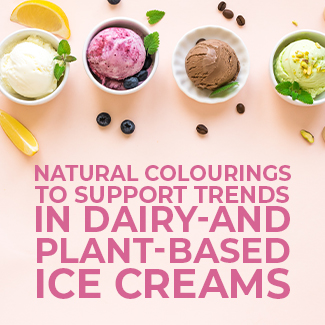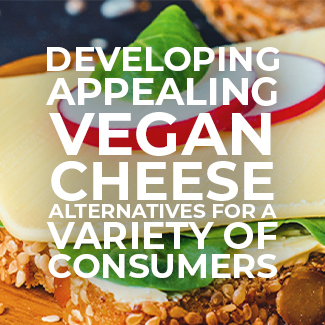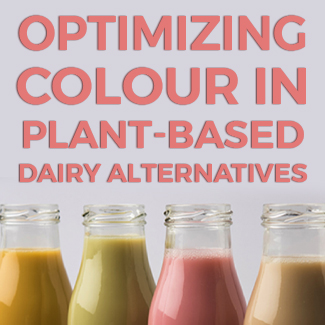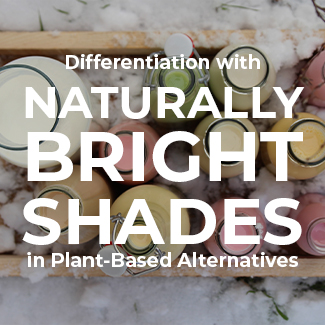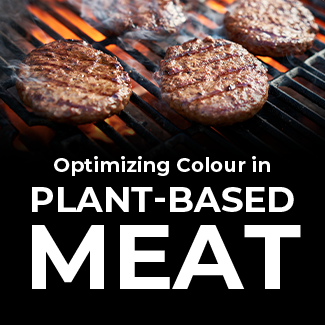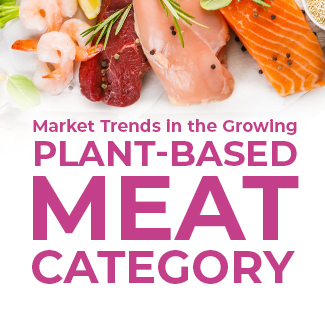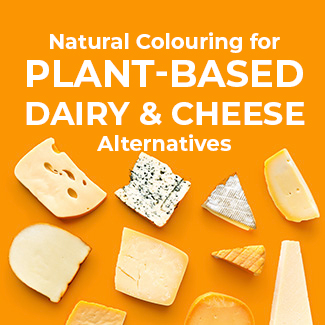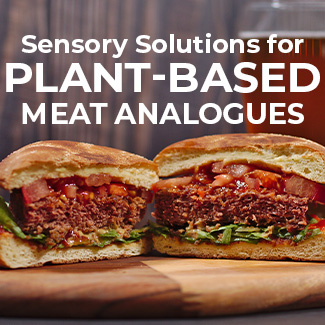Natural White Colour Blends “Free-From Titanium Dioxide” for Plant-Based Chicken, Shrimp, & Pork
What’s Next for Plant-Based Meat?
Plant-based claims in the new launch of packaged consumer goods have tripled between 2018 until 2022 as Mintel GNPD observes. In 2023, meat and seafood alternatives in Western Europe passed the 3000 USD million mark in retail value. The plant-based category keeps on expanding and is projected to keep growing at 11% CAGR until 2028. (Euromonitor)
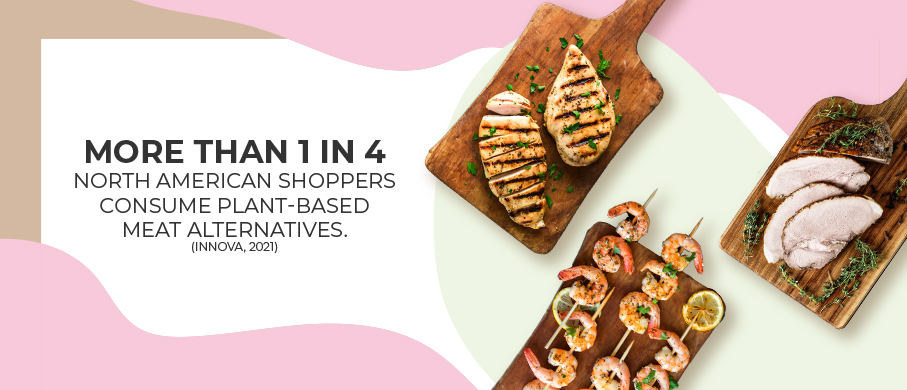
To meet consumer demand, plant-based meat companies are extending into new applications like chicken, pork, shellfish and seafood, and brands are also looking into new protein sources. The source material requires additional consideration, as the original hue of the base material will influence the choice of colouring solution to reach the desired target shade.
Creating Delicious-Looking Plant-Based Meats
Visual appearance is the first component of the multi-sensorial taste experience that comes with any meal. 30% of German consumers in fact consider meat-like characteristics a major purchase driver for meat substitutes and feel that it’s important that the taste and texture properties match their meaty counterpart (Mintel, 2023). To provide an attractive, delicious appearance for consumers, colour experts can formulate customized white blends of natural colours to compensate for unappealing base notes that don’t match the target meaty shade.
In order to impress shoppers straight from the shelf, consider these tips for creating the best plant-based meat visual:
Consider Base Shade
The base shade of a plant-based protein can be one of the top challenges for developers of white meat alternatives, because it is often very dark and may have unattractive base notes like yellow, brown, or green. A natural colour blend customized to compensate for the specific composition of your protein base can create the bright white visual or clean canvas you need to build that perfect appearance.
Identify a Target Aesthetic
Think about what appearance you want in the package, through cooking, and when the product is consumed. For a restaurant or prepared food scenario, like a fish stick, chicken nugget, or coconut shrimp alternative application, the final colour is the important thing. Coloured breadings may also be used to indicate flavor in these types of projects. However, if the item is being sold with cooking instructions, a certain colour transition may be needed.
Work with Experts for Custom Blends
Because white and similarly light shades can be so base-dependent, a custom blend is often necessary to achieve the target shade in a plant-based protein application. Colour experts with experience in the plant-based space can help accelerate development and work with your team to formulate the right colour blend for your needs, keeping in mind target, base, processing, regulatory, and cost.
Get Started with White Blends for Plant-Based Protein
Solutions like Sensient’s Avalanche™ portfolio, the natural alternative to Titanium Dioxide’s is a great starting point for your next white meat alternative project. The Avalanche™ platform provides whiteness at superior heat stability and without having an effect on the pH, offering product developers an optimal replacement for TiO2. Reach out today for a sample! If you’re ready to start working on a custom white colour blend with expert assistance from Sensient’s colour team, request a consultation—we can’t wait to hear from you!




